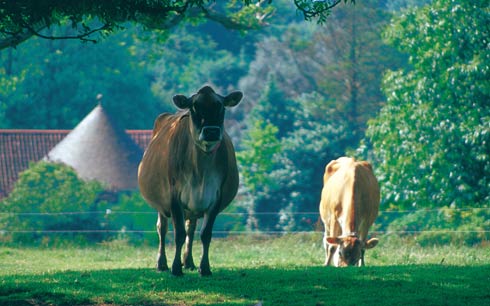In my twenties and thirties, my friends and I talked about the various ways we cooked spaghetti sauce. Although we lived in an area of South Jersey populated predominantly with people of Italian descent, many of us were of Celtic background, blue-eyed and beyond the pale. We had no intimate knowledge of sauce (a/k/a gravy.) But as young wives and mothers and because we were so amicably settled amongst our Italian friends and neighbors, sauce became a rite of passage.
When it came to good food, I gave a nod (and still do) to the Italians; creating good sauce was a way to become honorary "familia locale'".
an unknown, but real Italian mama.
Borrowed from foodloversodyssey
My friend, Michele, stood at her stove while I sat at her kitchen table. Curious about her sauce recipe, I asked her to reel off the ingredients. "I use only pureed tomatoes," said Michele. Yes, yes! I thought. I prefer those, too. "Then, I add a small can, or maybe two, of paste." "Garlic, of course." Do you saute it, or just throw it in? Onion? "Yep, a little." Do you fry your meatballs or carmelize them in the oven? My mother-in-law placed them directly in the sauce. I made them that way for years because I admired her cooking. And my meatballs were popular, but my audience was more a meat and potatoes crowd, so my Italian offerings probably would have been a hit if I'd browned a packet of ground beef and added Ragu. I've since learned that plunking the meatballs into sauce to cook is blasphemy, according to my husband and his mama, a natural Sicilian cook.
As a novitiate to meatball-making, I used ground beef only. I soon learned that a respectable meatball requires a combination of beef, pork and veal, or at least beef and pork, which provided way more flavor. Michele turned to me and said, "I only put cheese in the meatballs, not in the sauce." She seemed proud, as if she had made a decision on her own, a process that arose from trust in her own taste buds and preferences - what worked for her.
I now live in Vermont where good Italian food is not readily available, but there are a few places that dedicate their menus and kitchens to meals as authentic as possible. Burrata (a type of mozzarella) is sourced from milk obtained from local dairies. The beef and pork used in ragu' comes from cows and pigs who graze on local farmland. Vermont delis are not capable of offering a single dish that compares to Philly eggplant parm sandwich, but in Vermont, we try. We start with fresh food; it seems a good path to follow. New generations come with new attitudes. Trust in old methods melds with the progressive for cooking is art. We admire an original, but there is always space for exploration.
My cat, Bessi, waiting for a taste (no garlic or onion for cats.)
My husband now makes the sauce in the family. In a future post, perhaps he'll let me share his recipe. But back in 1980, I learned from a friend. I experimented and tried out new things. I combined my preferences with a friend's sensibilities, plus a little help from an Italian friend or two.



No comments:
Post a Comment